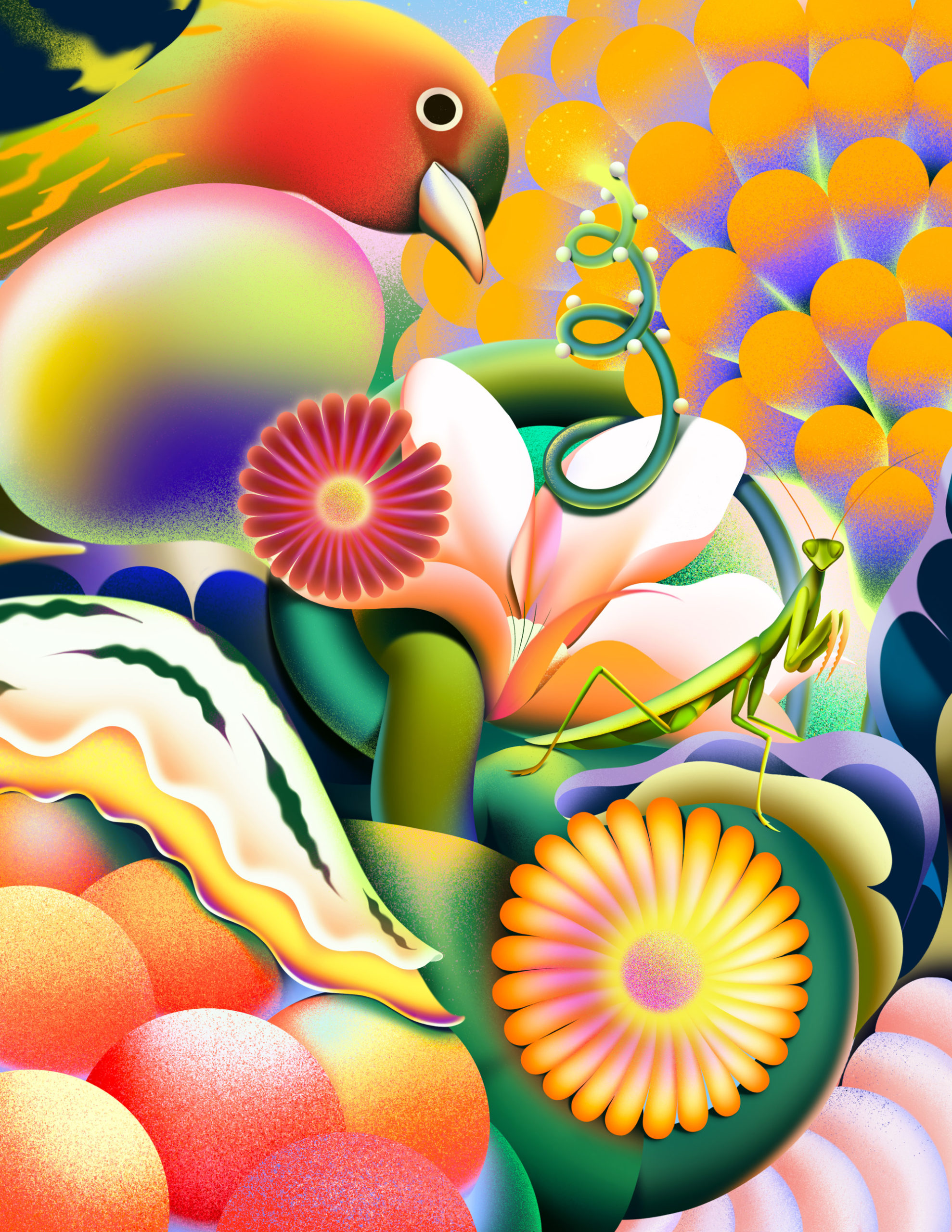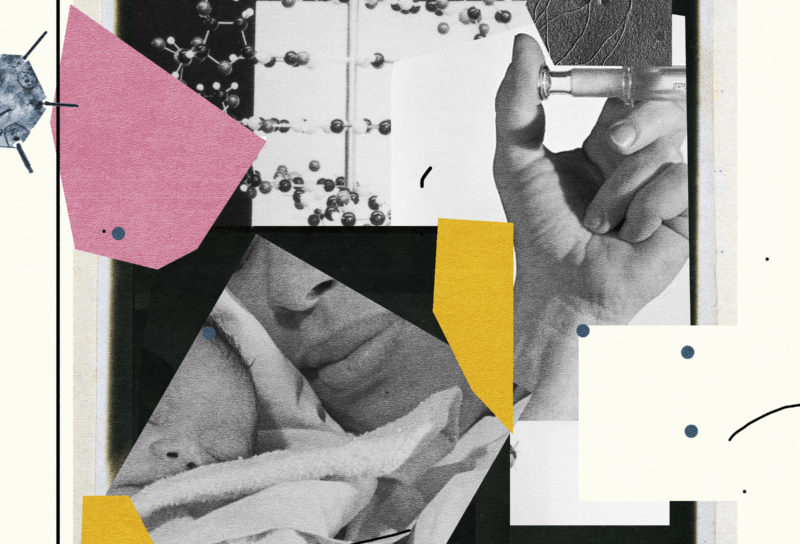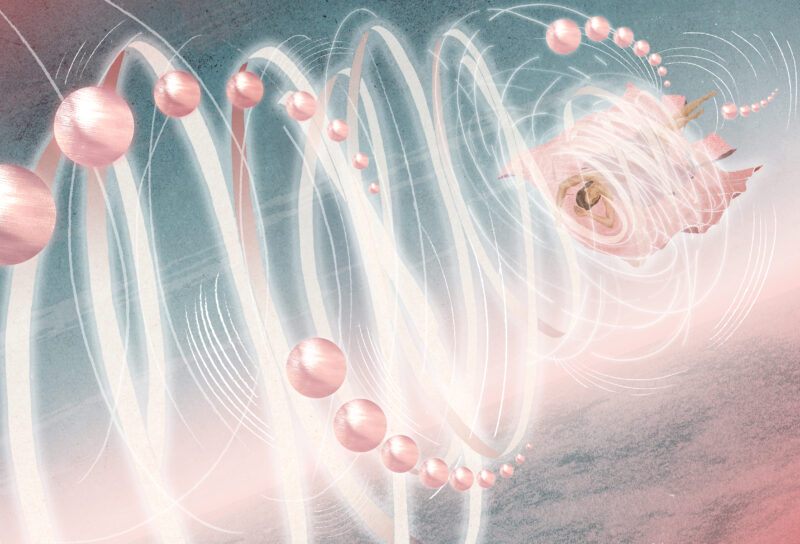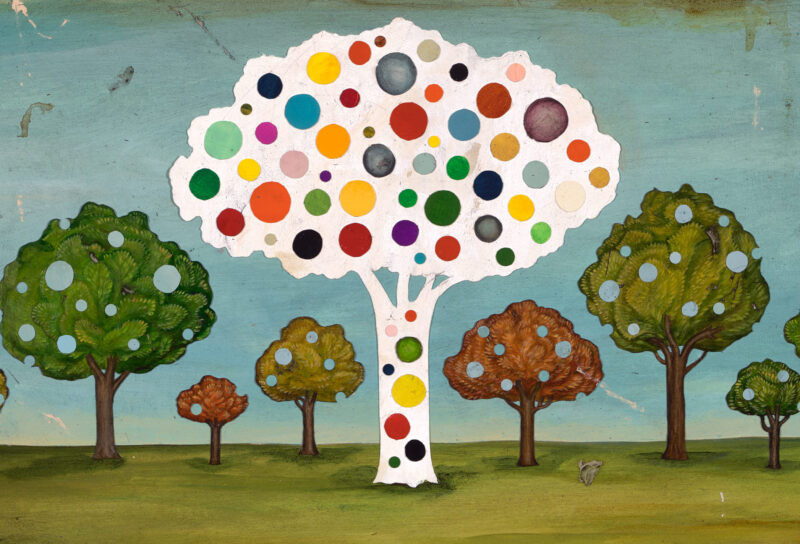Deboleena Roy was working in the lab when something strange happened. A postdoctoral researcher at the Institute of Medical Science at the University of Toronto, she was standing in front of a sterile fume hood, her latex-gloved fingers on the door handle of a cell incubator.
Inside were hundreds of well-fed rat cells, basking in 37 Celsius temperatures. In the course of in vitro lab work, it’s a routine practice to dispose of extra cultured cells — which can multiply rapidly — while keeping a small portion alive for future experiments, a process called subculturing.
That day, Roy was halfway through a cell subculturing procedure, transferring small cultures of hypothalamic neurons to fresh plates, and disposing of the rest, when it struck her: The neurons were currently flourishing in a warm nutrient bath, and she was about to kill them by removing them. “I held off on opening the incubator door for a few labored moments, then immediately considered the absurdity of the moment,” she later wrote. The gravity of that decision, an ontological crisis Roy now refers to as “the pause,” would determine the rest of her career.
A biologist is supposed to stand at some remove from her subject in the lab — be it a mouse, a bacterium, or a humble cell. But during the pause, Roy lost that footing.
Part of it had to do with rhythm. Every six hours, she measured the neuronal cells’ cyclic hormone secretions; every three to four days, she pruned back their proliferating growth. She had begun to feel these rhythms in her bones. Roy and the cells were in a kind of dance together, a whirling entanglement that made her question her own objectivity as a scientific observer and drew her to the lab at odd hours. “It was 2 a.m.,” she remembers, when I reach her for a conversation over Zoom. “Here I am, holding this incubator door — and I thought to myself, what am I doing?”
These days, Roy is Dean of Faculty at Emory College of Arts and Sciences in Atlanta, Georgia. Although she traded lab work for theory years ago — and now teaches Women’s, Gender, and Sexuality Studies at Emory with a dual appointment in Neuroscience — she retains fond memories of her years as a working biologist. This experience, a formative moment in her thinking, figures prominently in her 2018 book Molecular Feminisms, in which she outlines a feminist philosophy of science, ethics, and the vast nonhuman world.
Roy’s pause that day was about more than just guilt, she tells me. As a young scientist, she’d been adamant that she didn’t want to kill animals, but she had made her peace with the process of subculturing, which was necessary in her thesis research. Her crisis at the cell incubator emerged from the sudden, disorienting realization that her relationship with these cells was not one-sided. The cycles of their growth, division, and death regulated her life. She was in their thrall. She acted on the cells, but they acted on her too — so profoundly altering how she spent her days that she grew unsure about who was doing what to whom.
“I’m a scientist, I’m supposed to do all the knowing,” Roy tells me. “But in fact, I think the cells were doing some of the testing on me.”
Lab Conditions
In the lab, scientists form reciprocal arrangements with cells: They provide, or withhold, those conditions that allow life to thrive, and in turn, the cells reveal their behavior under novel circumstances. This is a relationship, although not a particularly healthy one.
In the social sciences, there’s an emerging consensus that any account of existence that ignores our entanglement with other life forms is incomplete. Anthropologists are already including nonhuman actors in their field work — in sweeping multispecies ethnographies tracing the ecological and cultural relations of human beings and plants, animals, fungi, bacteria, and even viruses. Could a similar perspective be brought to bear in the more highly controlled ecosystem of the lab?
Roy is hardly the first biologist to feel a pang of empathy for her lab subjects, and this more complicated feeling of entanglement is not new, either. The cytogeneticist Barbara McClintock believed that nurturing what she called a “feeling for the organism” was a vital part of being a good scientist. McClintock’s landmark work in the mid-20th century proved the chromosomal basis of genetics; her discovery of the fluid nature of genetic material, initially dismissed as fringe, was recognized with a Nobel Prize in 1983.
Her organism of choice was maize, whose colorful kernels visibly express the plant’s genetic traits. Over the course of many years, she came to know — with “great pleasure” — each individual plant in the experimental cornfield at Cold Spring Harbor Laboratory, where she conducted research for more than 50 years. The cycles of life and death in her plants were slower than those of other experimental subjects commonly used to study genetics, such as fruit flies. It gave her time to know the plants in their fullness, and to study them closely.
At the microscope, she was equally immersed in the hidden world of maize chromosomes. Like her plants in the field, they were always changing, and sensitive to environmental disturbances. She learned to notice different kinds of changes, and the nuances between them. She chastised other scientists for attempting to “impose an answer” on what they saw, preferring to become “part of the system” and let the answers come to her. With the time to look, the patience to listen, and the openness to allow the plants to speak for themselves, McClintock developed an extraordinary sensitivity to minute changes in her nonhuman collaborators.
Such sensitivity is rare; it earned McClintock a reputation as a mystic. Of course, McClintock’s only magic power was the patience to observe life’s mysteries in their most mundane unfoldings.
Many others have arrived at similar states of heightened perception by artificial means. The countercultural icon Elizabeth Gips, in an essay recounting her first experience trying LSD, described sitting transfixed for hours under a tree, examining an infinitesimally small insect. “The tiniest little green bug clings to a blade of grass, so small it makes aphids look like giants,” she wrote. “Nothing so small ever let me see it before.”
This observation, although made far afield from the lab, dovetails with McClintock’s understanding of her role as a scientist: The closer and more willingly you look at the world, the more it allows you to see.
As McClintock’s biographer Evelyn Fox Keller notes, the profound intimacy McClintock developed with her maize over years of close association both literally and figuratively extended her vision, allowing her to see beyond human limitations, deep into the minute genetic changes occurring in maize across generations. This was not an abandonment of scientific objectivity — it was the consequence of a dedicated scientist’s sustained observation. Another, perhaps unintended, consequence was an overwhelming sense of the interconnectedness of all things. Once she’d developed an affinity with maize, it became difficult to disentangle herself. “Basically, everything is one,” McClintock told Keller. “Every time I walk on grass, I feel sorry, because I know the grass is screaming at me.”
In Molecular Feminisms, Roy expands on McClintock’s line of questioning, exploring the very idea of scientific taxonomy, and the practice, however useful, of drawing hard lines between organisms. Not only does taxonomy alienate human beings from the natural world, she argues, but it creates hierarchies where there are none. There is no great chain of being; everything alive is interdependent. “The question perhaps is not whether or not differences exist between humans, animals, plants, water, inorganic elements and more, but how we think about these differences,” she writes. “Do we choose to see these differences as differences of degree, or as differences in kind?”
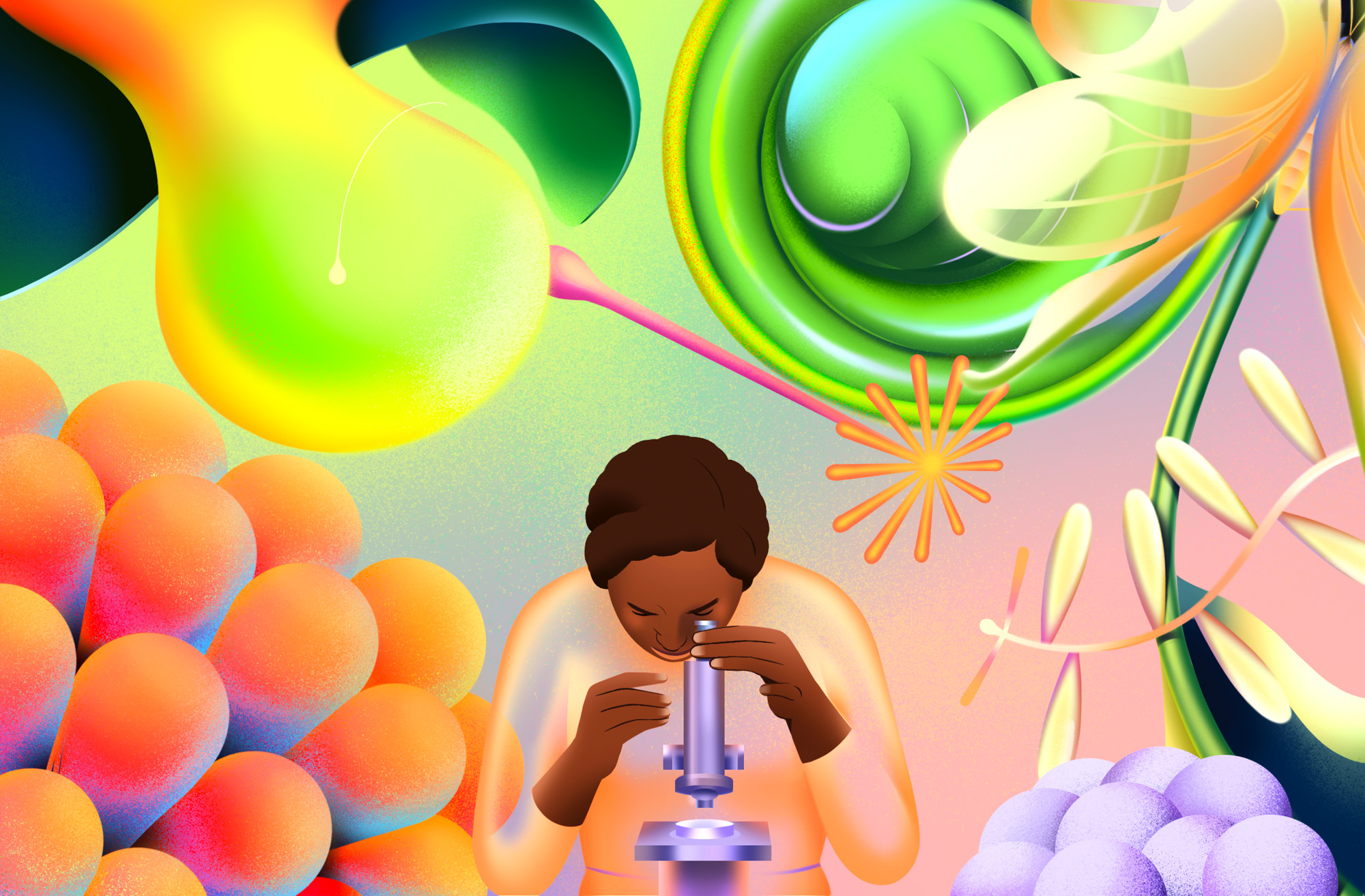
Reconsider the Hierarchies
Assigning values to differences is a choice that we make. Rather than imagine ourselves at the summit of a hierarchy of life, we could just as easily place ourselves at ground level, along a continuous plane. A shift in vantage point may help us see our entanglements more clearly. We are different from corn, but many human cultures have relied on corn for survival. We are different from cells, but we are made of cells — to say nothing of the consortium of microbes that live in our guts, throats, and skin. As the feminist scholar and philosopher Donna Haraway observes, “to be one is always to become with many.” Roy’s call for continuity with the nonhuman world may be a philosophical provocation, but it’s also a potent reminder that we are life acting on itself.
Rather than asking what an organism is — taxonomically, Roy suggests, we might benefit from asking what it can do. While science has historically relied on fixed identities and essences, working as a biologist brought Roy into contact with “material actants” — living things like genes, hormones, bacteria, and cells — that are more usefully described as processes. The deeper you look into the microscope, the squigglier the lines separating subject and observer become, and the more life itself appears to be defined by a capacity for change that we all share. Life, Roy writes, is an event.
Biology, however, is not. As Fox Keller pointed out, the modern Western scientific worldview is rooted in the mechanistic visions of Descartes — who compared the cries of a wounded dog to the sound of an improperly functioning machine — and Francis Bacon, whose rhetoric, Fox Keller wrote in an influential paper, “conjoins the domination of nature with the insistent image of nature as female.” This conception of science as a process for controlling and subjugating an unfeeling world has had lasting influence over the centuries. But as McClintock’s work demonstrates, scientists can also choose to be in conversation with nature, listening carefully when it answers. This approach has long been part of Indigenous views of reality, which see the world through relationships of mutual reciprocity.
We are all entangled with the living world, but those who study it are doubly so. Sometimes this entanglement can feel like communion: A sensitive enough scientist can begin to feel as though the very grass is screaming at her. Barbara McClintock was marginalized for decades, until her painstaking observations were validated by molecular biologists.
Dismantling the dominating impulses of science has been interpreted by many scholars as a feminist project, but it’s as much about learning to face a feeling — a sense of instability, change, and mutual becoming. It’s tricky, in the results-oriented world of research, or while under institutional pressure to publish concrete findings, to welcome such uncertainty. Roy has the freedom to probe these questions, in part, because she operates as an interdisciplinary academic. But making an effort to feel for organisms in their fullness is not only a philosophical position. It can have practical advantages, too.
Sarah Richardson is a molecular biologist whose bioengineering startup, MicroByre, tames wild-type bacteria for industrial use. Like McClintock, she prefers to let organisms speak for themselves, studying where bacteria come from, what motivates their behaviors, and what they need to thrive. Rather than dominate bacteria, she domesticates them — in the hopes that humankind and bacteria, in an improved symbiosis, can work together to produce useful materials, break down waste, and save the world.
As we talk over Zoom, her cat parades its tail back and forth across the screen like a sentinel. Domestication, she explains, gesturing at her cat, is a mutually beneficent arrangement. Biologists needn’t abuse model organisms like E. coli and yeast, pushing them beyond their natural capacities, when there are so many wild bacteria in the world perfectly suited to the task. They just need to be coaxed with a little empathy, she says. Encountering wild bacteria is like brokering first contact with an alien species. “You have to learn its context, every time. And you have to lose some ego to do that.”
Richardson hopes to train wild bacteria to someday convert unused biomass into petrochemicals. McClintock discovered the existence of the transposon, a DNA sequence that can change its position within a genome, long before the invention of genetic sequencing. Roy’s cell subculturing procedure helped her discover new forms of communication between estrogen receptors, estrogen molecules, and GnRH neurons in the brain. These scientists show that there are ways of encountering the nonhuman world, and even putting it to work for us, that emerge from a fundamental respect for life. It just requires a renegotiation of power, and a willingness to approach our counterparts in the lab — be they cells or whole organisms — as collaborators.
Empathy is not only a question of life and death. It’s an orientation to our nonhuman counterparts in the lab that can help us ask new questions. Richardson tells me she strives to be empathetic, but she doesn’t want it to feel crippling. Instead, she wants empathy to drive her curiosity about the organisms she studies. “Empathy needs to be less, ‘Oh shit, I’m killing them,’’’ she says, “and more, ‘Why were they doing that thing in the first place?’”
I begin to make an observation about Barbara McClintock, but before I can finish my sentence, Richardson stops me. “The feeling for the organism,” she says, nodding. She tells me that she was lucky to be exposed to McClintock’s ideas when she was a high school student interning in a molecular biology lab at Johns Hopkins. Although her startup integrates automation and machine learning into its process, Richardson feels she’s cultivating a feeling for each organism in her lab — just like McClintock did.
If you want to succeed in bioengineering, she says, it’s easier to work with life than against it. In biology, after all, animosity often evolves into interchange, and many fundamental biological processes emerge from the gradual symbiosis of mutual antagonists. Evolution may be driven as much by cooperative relationships between organisms as by competitive ones. And although we don’t always fully understand the nature of that symbiosis, we’ve been making it work for us for centuries — from domesticating dogs and cats to breeding roses and transforming wild maize into corn.
Richardson turns her laptop camera sideways, so that her now-sleeping cat fills the screen. “When a dog wags its tail, it means one thing, and when the cat wags its tail, it means another, and you have to have a feeling for that,” she says. “The people who figured it out the first time were bioengineers. We need to think of the people who laid that down in our consciousness as biologists and bioengineers. They taught us the feeling for the organism.” She gazes fondly at her cat. “That’s how we got this idiot,” she says.
When we domesticate other life forms, we’re brokering an agreement: room and board in exchange for affection, sustenance, or protection. But we’re not defined by this transaction, and neither are our pets. As any cat owner can attest, even the tamest tabby contains mysteries.
Roy says the process of domestication can lead to blind spots. “In all of our labs, we have domesticated E. coli, thinking that we are going to use the machinery of this organism for our own means,” she says. “What about the other parts of the life of these organisms that we’re not paying attention to?”
In her book, Roy points out that biologists, geneticists, and bioengineers have built their disciplines around the premise that life is a text that can be edited, rewritten, and translated by organisms like bacteria. In synthetic biology labs, E. coli is bred precisely for this purpose — to transcribe DNA and translate RNA. However, Roy says, “once bacteria have performed their tasks of transcription, recombination, or gene editing, they are promptly snuffed out for the valuable proteins they carry inside of them.”
It’s a missed opportunity, she argues, to approach our counterparts in the lab through such a mechanistic lens — to deem them worthy of our care and attention solely when they are productive. How we treat the microcosm is a reflection of our attitudes in the macrocosm. “We have deemed some humans to be better than others,” Roy says, nodding to the history of molecular biology and its role in eugenics. “We have deemed some human traits as not being worthwhile, or not being productive, because we are unable to understand or appreciate their usefulness.”
When we question hierarchies and taxonomies, even at the molecular level, we are engaging in a radical act of humility — one that manifests in our human relationships, too. It’s the project of a lifetime, Roy says, to see yourself as one of many. Tame, wild, subject, observer: We are all carriers, in our own way, of the patterns of life. By deliberately decentering the human, we only become more humane.
